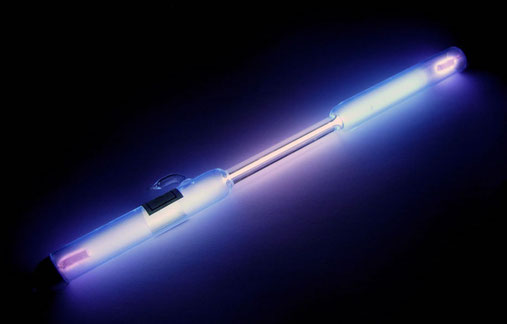

The symbol shows a gas mask. This is because chlorine is a toxic gas, and has been used as a chemical weapon. Chlorine is yellowy-green in colour, as is the image.
| Density | 0.002898 |
| Melting Point | −101.5°C |
| Boiling Point | −34.04°C |
Chlorine kills bacteria – it is a disinfectant. It is used to treat drinking water and swimming pool water. It is also used to make hundreds of consumer products from paper to paints, and from textiles to insecticides.
About 20% of chlorine produced is used to make PVC. This is a very versatile plastic used in window frames, car interiors, electrical wiring insulation, water pipes, blood bags and vinyl flooring.
Another major use for chlorine is in organic chemistry. It is used as an oxidising agent and in substitution reactions. 85% of pharmaceuticals use chlorine or its compounds at some stage in their manufacture.
In the past chlorine was commonly used to make chloroform (an anaesthetic) and carbon tetrachloride (a dry-cleaning solvent). However, both of these chemicals are now strictly controlled as they can cause liver damage.
Chlorine gas is itself very poisonous, and was used as a chemical weapon during the First World War.
Hydrochloric acid (HCl) was known to the alchemists. The gaseous element itself was first produced in 1774 by Carl Wilhelm Scheele at Uppsala, Sweden, by heating hydrochloric acid with the mineral pyrolusite which is naturally occuring manganese dioxide, MnO2. A dense, greenish-yellow gas was evolved which he recorded as having a choking smell and which dissolved in water to give an acid solution. He noted that it bleached litmus paper, and decolourised leaves and flowers.